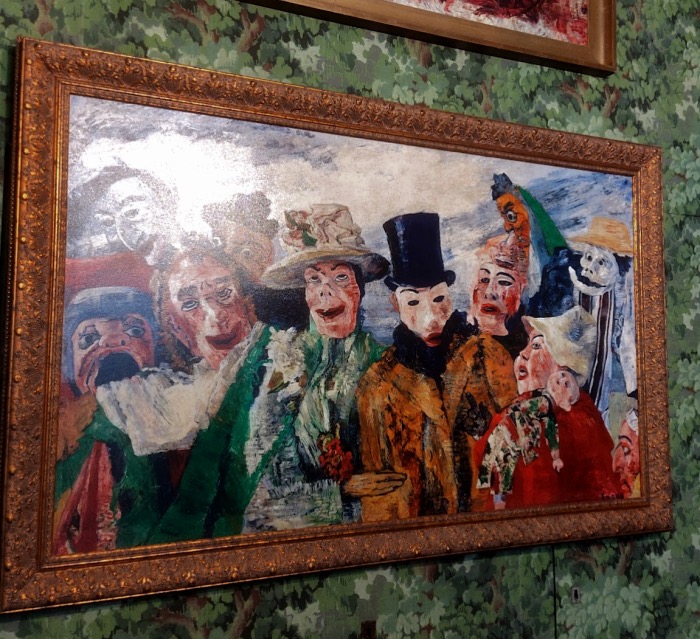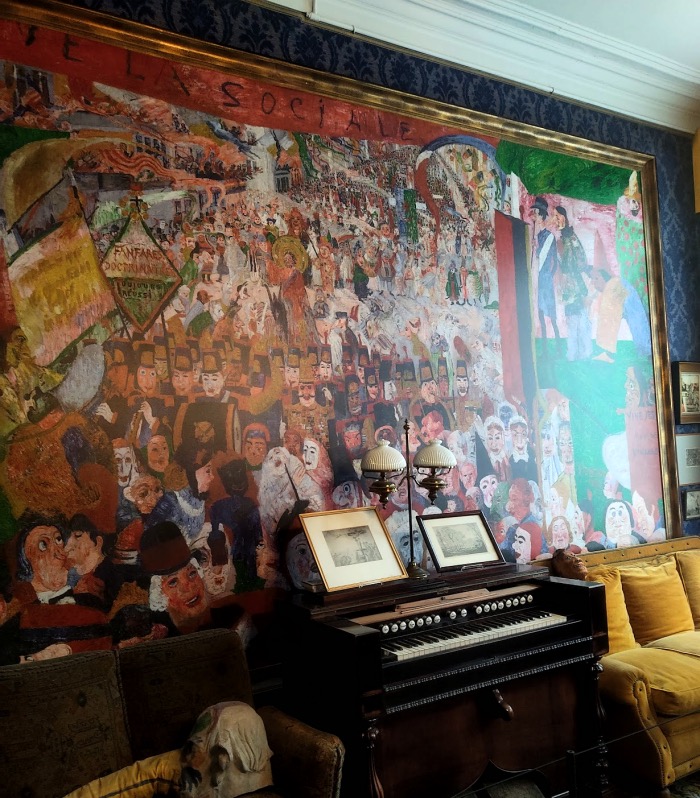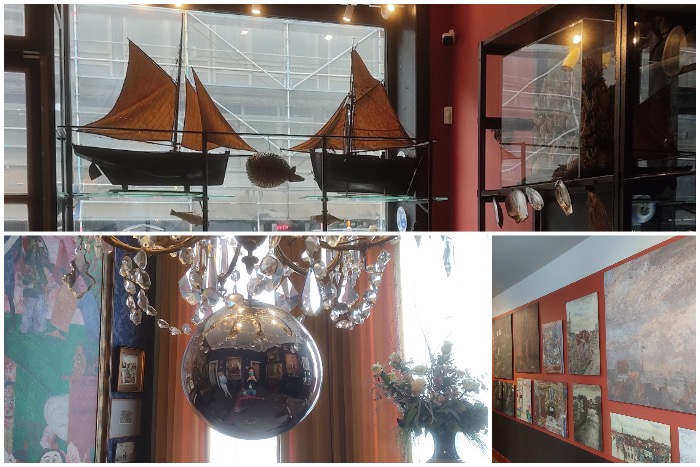
Have you ever heard of James Ensor’s house in Ostend, in Belgium?
If you feel like immersing yourself in the artistic universe of an eclectic artist then the James Ensor House is the place to be. The
name of this artist evokes the extravagance and eclecticism of the Belgian art scene of the 19th and 20th centuries. What makes his house not only a museum to visit but more importantly an experience to have is that it offers the opportunity to visit the childhood home of a unique artist in the town where he grew up and was trained: Ostend, a picturesque Flemish coastal town overlooking the North Sea.
The Ensor Huis, now a house-museum, is a place that encapsulates the eccentric and multifaceted soul of James Ensor.
I sent our bookmirrorbookmirror_ Chiara Bressan, who had already told us about the wonders of theAdornesdomein in Bruges and the Hotel d’Hane Steenhuyse, to visit this wonderful place. I am pleased to share in the blog her experience, which I am sure will inspire your future travels.
Exploring The House of James Ensor in Ostend: inside the world of an eclectic artist

James Sidney Edouard, Baron de Ensor, better known simply as James Ensor, was one of the most important figures in the Belgian art scene, living at the turn of the 19th and 20th centuries. In Ostend, a small town on the Flemish coast overlooking the North Sea, the artist’s birthplace, the community has set up a museum experience in what was his birthplace. Today we take you through the rooms of this house-museum, inside the world of this eccentric and eclectic artist.
The entrance to Ensor Huis gives onto Vlaanderenstraat, which leads straight to the beach.
Stepping through the entrance, one finds oneself in a ground-floor lobby that serves as an introductory room to the artist’s life. On the main wall, a series of digital and interactive reproductions of some of the works offers an initial foray into Ensor’s style, which appears immediately dominated by satire and parody, as in ‘The Baths of Ostend,’ a painting that immediately captures you mainly because of the extreme richness of miniatures and unorthodox details that the author was not afraid to conceal.
Deliberately provocative and ironically biting, Ensor also used his art as a critique of a bourgeois society that in his eyes was increasingly empty.
We go upstairs accompanied by our guide and again find ourselves in a room with walls papered with reproductions, this time not digital, of Ensor’s major works. The
intent of the room is to offer a quick glimpse of the eclecticism of our artist, who in the course of his activity approached many different currents, taking cues from all but copying none, as he himself was keen to make clear. And indeed, observing the decoration of the room, one realizes how varied were the styles and phases traversed by his brush, with some influences clearly more recognizable than others.
Impressionism, symbolism, expressionism...all distinguishable and at the same time merged into a new and unique style characteristic of Ensor only, like water inseparable from salt, equal and at the same time profoundly transformed.
Among glass cases containing small personal effects and theatrical masks that later became artistic subjects, we go down again to what was the family emporium.
A small gift and antique store where Ensor spent most of his time as a boy and which profoundly marked the subjects of his paintings. The focus on miniatures and the hodgepodge of small objects, masks, and wackier figures in his canvases were largely inspired by what James found himself repeatedly observing every day within the four walls of his parents’ workshop.
We go back upstairs to the most private rooms in the house.
In the small sitting room set up with a small mustard-yellow sofa and a round table with a sagging chandelier and silver ball à la Escher there is also a piano and a small organ.
A multifaceted artist, Ensor in fact also enjoyed composing music from time to time, mainly as a self-taught musician, and this was also the room where he invited trusted friends and guests to listen to his latest creations.
Opposite the accordion, full-walled in its imposing dimensions, is a reproduction of the monumental ‘Entrance of Christ in Brussels in 1889,’ perhaps the most famous of Ensor’s works, in all its biting parody resulting in a masked, grotesque carnival.

Masked and grotesque are perhaps the words that most associate with much of the composition of Ensor, a decidedly extravagant and controversial figure, like his paintings. A bizarre, singular art, a melting pot of many different styles, of past and contemporary art, of Kafkaesque expressionism and Pirandellian parody, of bitter and accusatory laughter, of enactments in the theater-reality of society contemporary to him.
Of faces disguised as masks mingling with ordinary people and scattering through the streets, in a world where the boundary between reality and fiction and between life and theater becomes so thin as to be unrecognizable, as in “Intrigue,” the last painting we admire before leaving behind the small world of this house-museum on the Belgian coast, which tells us about a unique artist.

